Learning how to chop an onion couldn’t be any easier! In this tutorial, find out everything you need to know about preparing, cutting, and storing onions to be used in all sorts of dishes. You may just learn some safety tips and tricks along the way, too!
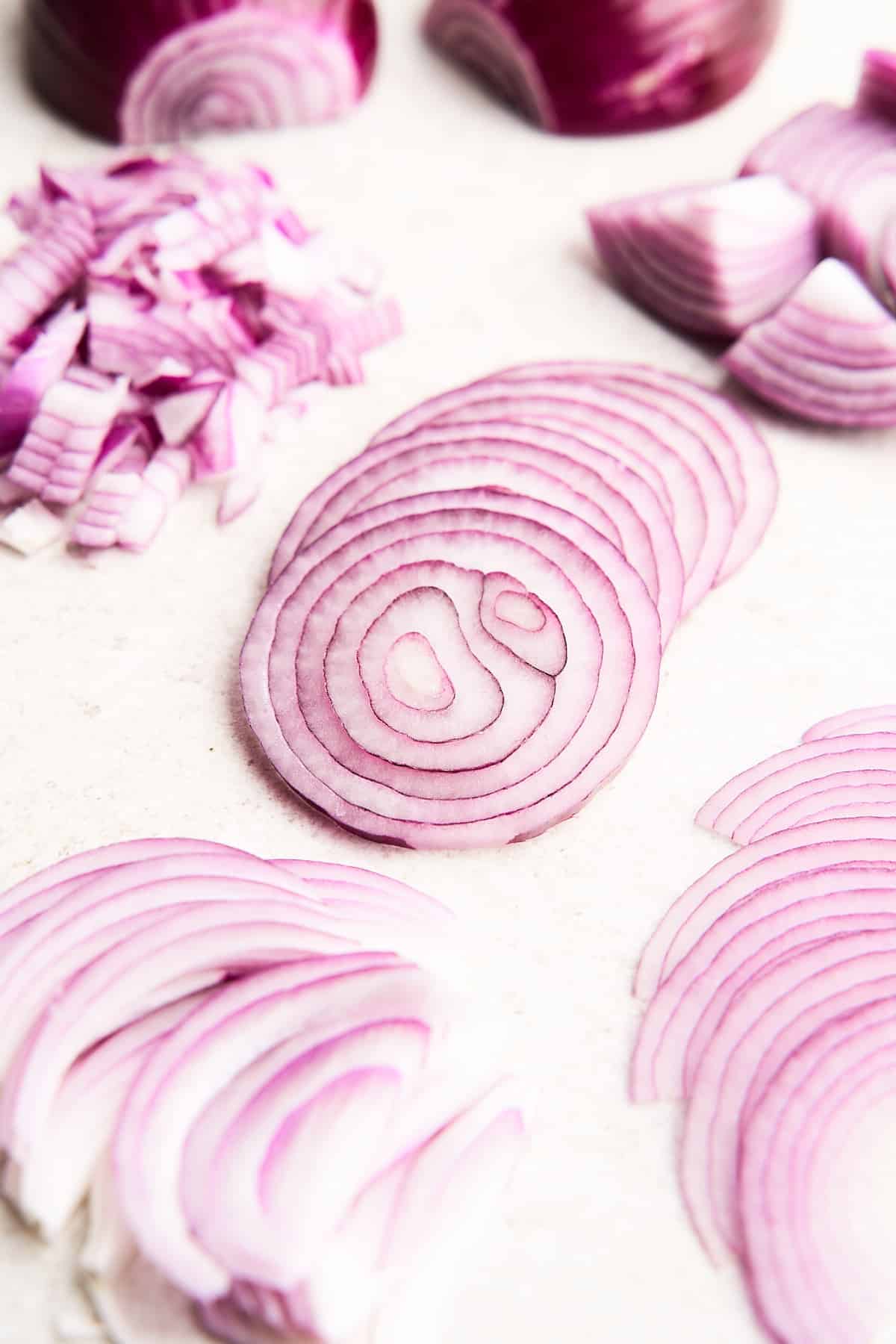
What are onions?
Onions, also known as a common onion or bulb onion, are the most widely cultivated vegetable species of the genus Allium (likely because there are so many types of onions). Not only that, they are one of the most widely used vegetables in cuisines all across the globe.
Mastering preparing, slicing, and dicing is crucial if you’re going to be the very best at-home chef! We’ve got an entire library of guides to cutting various ingredients. But if you enjoy savory flavors, zesty sauces, and delicious stir-fries, this guide to cutting onions has got you covered.
How to chop an onion
If you’ve ever wondered how to cut an onion without crying, I’ve got lots of tips for you! Learn how to dice, slice, cut into rings, and more below!
Trim & peel
With a very sharp chef’s knife, cut the stem end off of the onion. Make sure to leave the root end intact (just like you would a shallot) as this will help keep the layers aligned while you cut it.
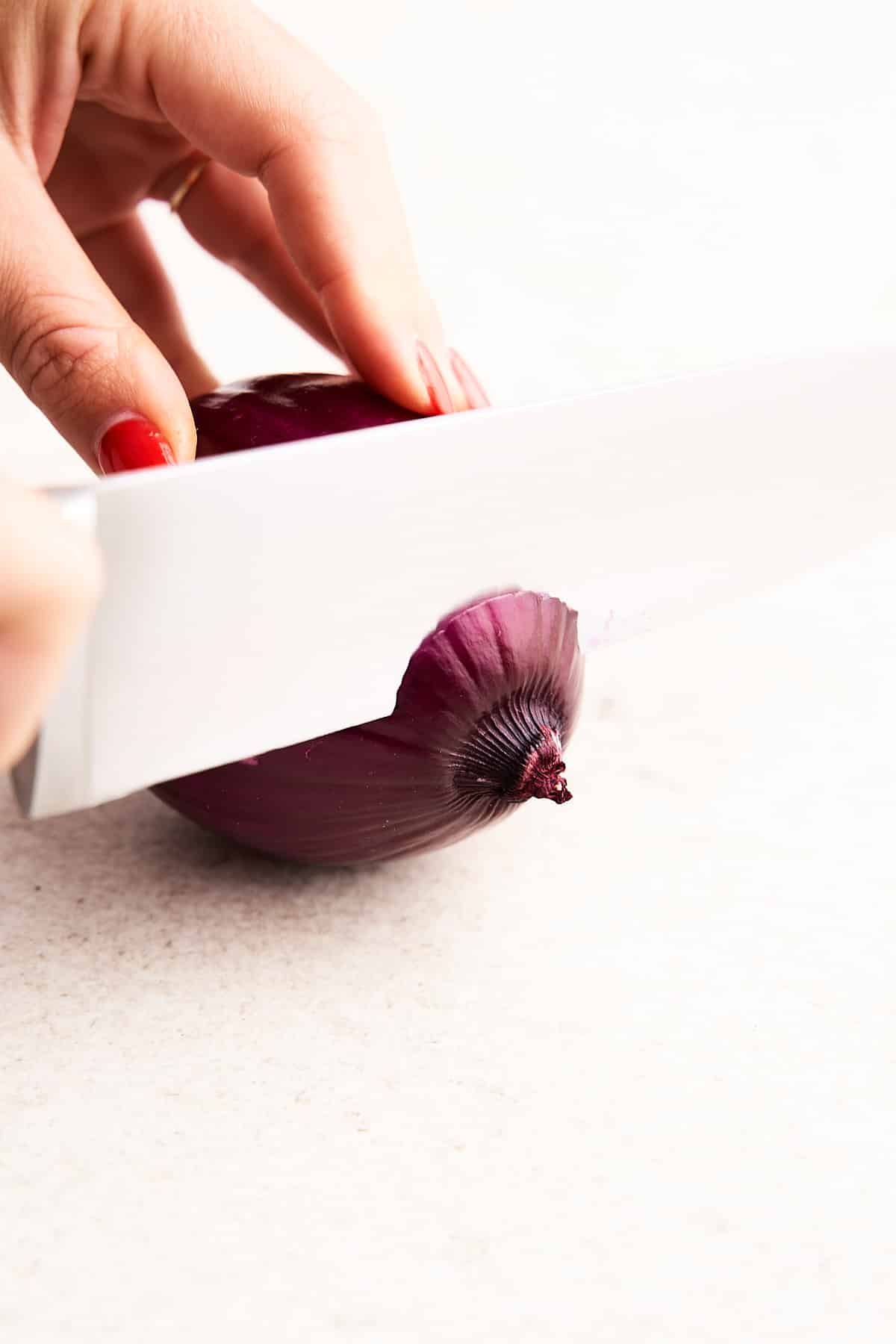
Place the onion on the trimmed stem end, and slice it in half from the root end to the stem end (aka pole to pole). Peel the papery outer layer off of both halves.
Option 1: Rings
Stand the onion up on the stem end, and make a small slice on one side for a flat piece. Lay the onion on the flat side, then with a firm grasp, slice it starting from the stem end into ⅛-inch or ¼-inch thick rings. These make a delicious addition to burgers, sandwiches, or making onion rings!
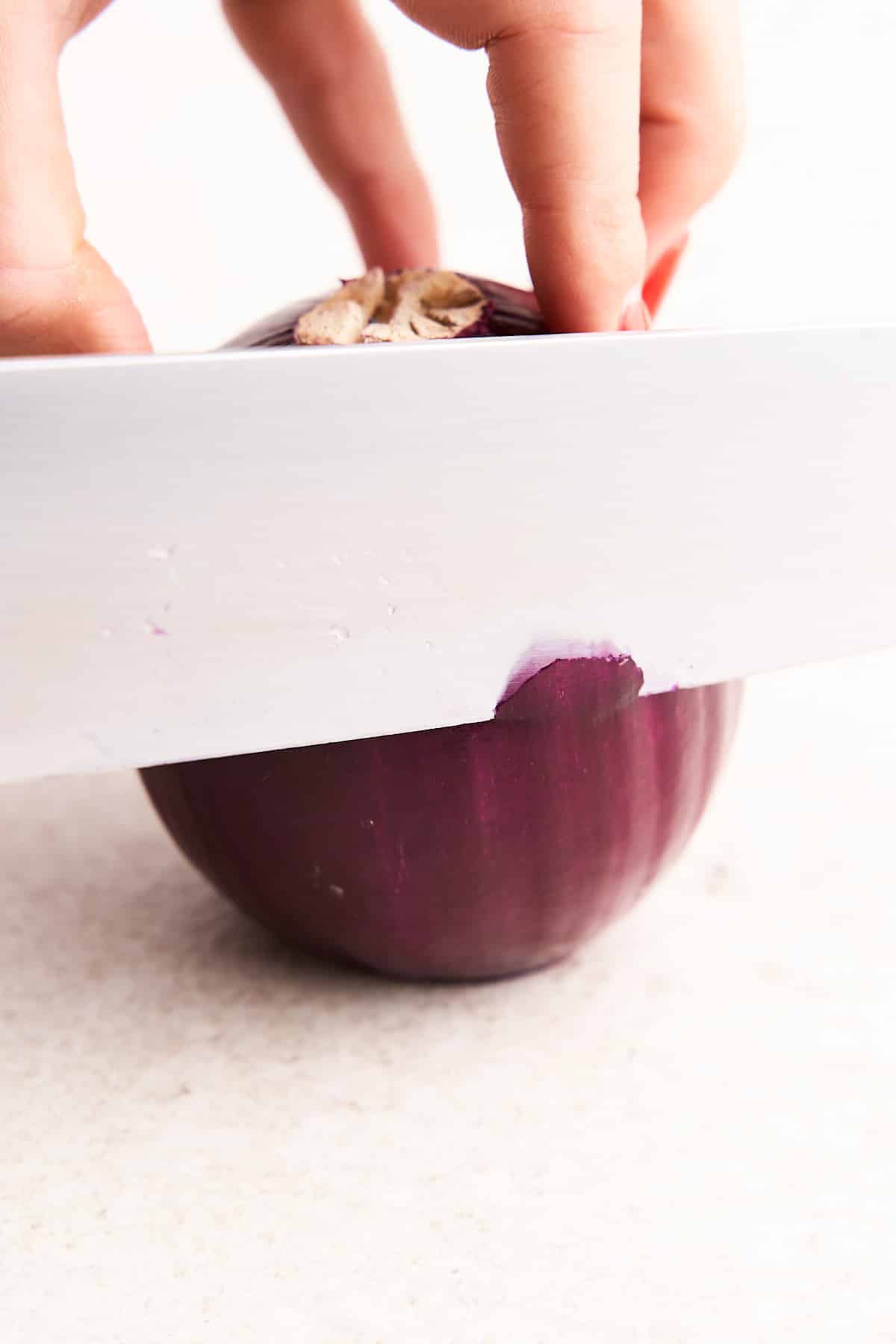
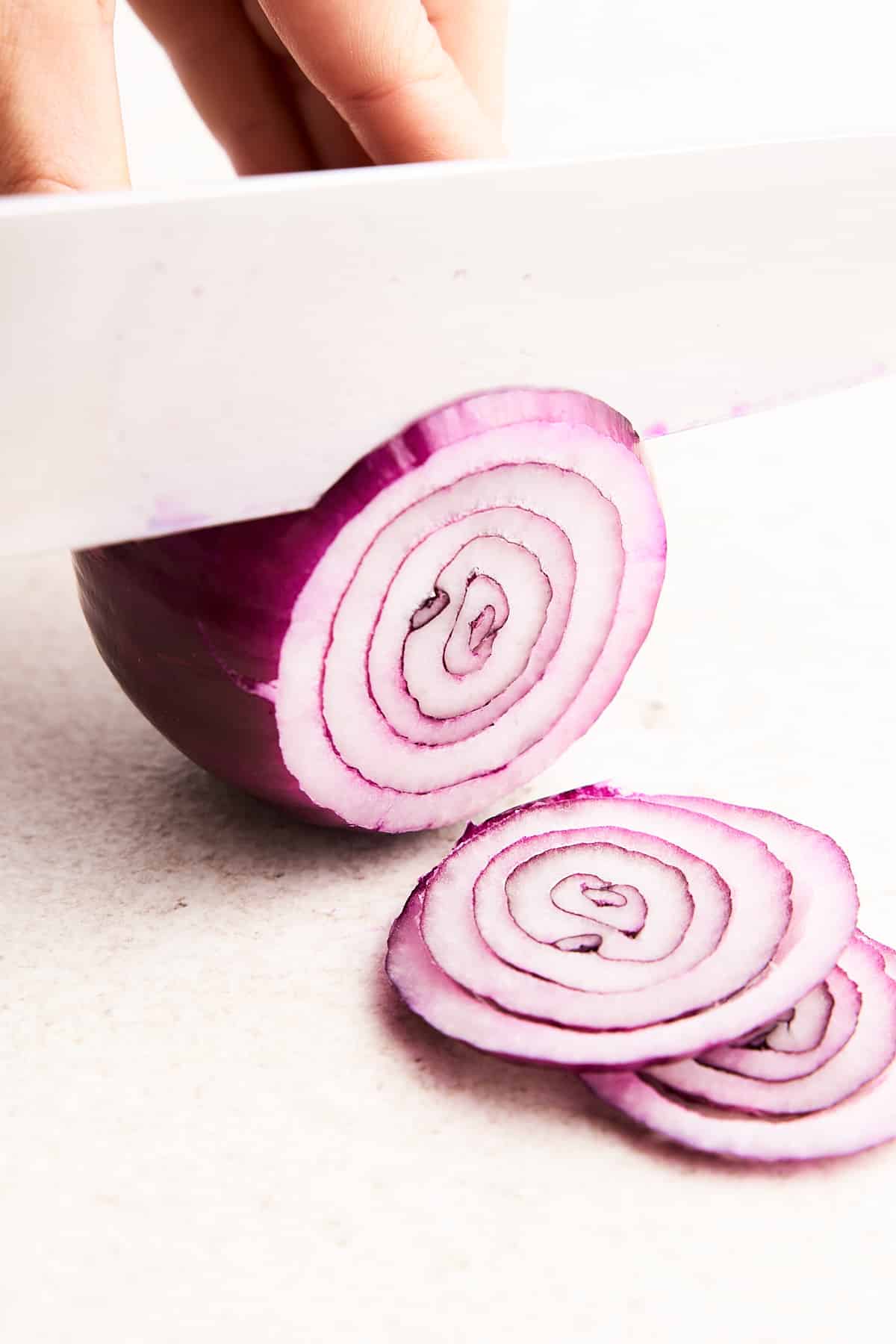
If you have one, you can use a mandoline to cut an onion into rings. Just keep your fingertips away from the blade.
Option 2: Sliced (lengthwise or crosswise)
Once you’ve peeled the onion halves, lay each one on a flat side. With the root end facing away from you, slice the onion lengthwise all the way to the other side. This technique results in onions that are sturdy, making them great for stir-fries or stews.
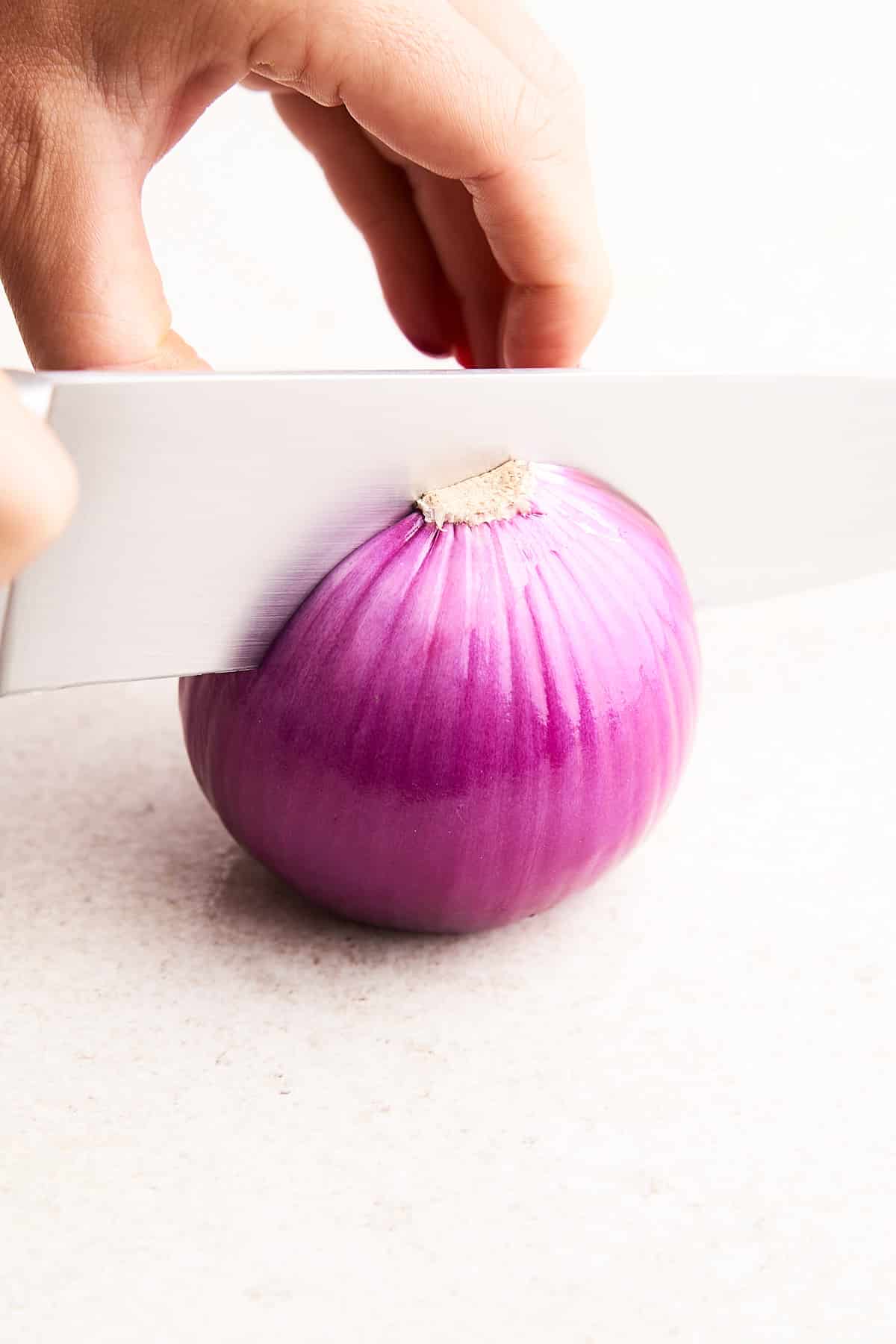
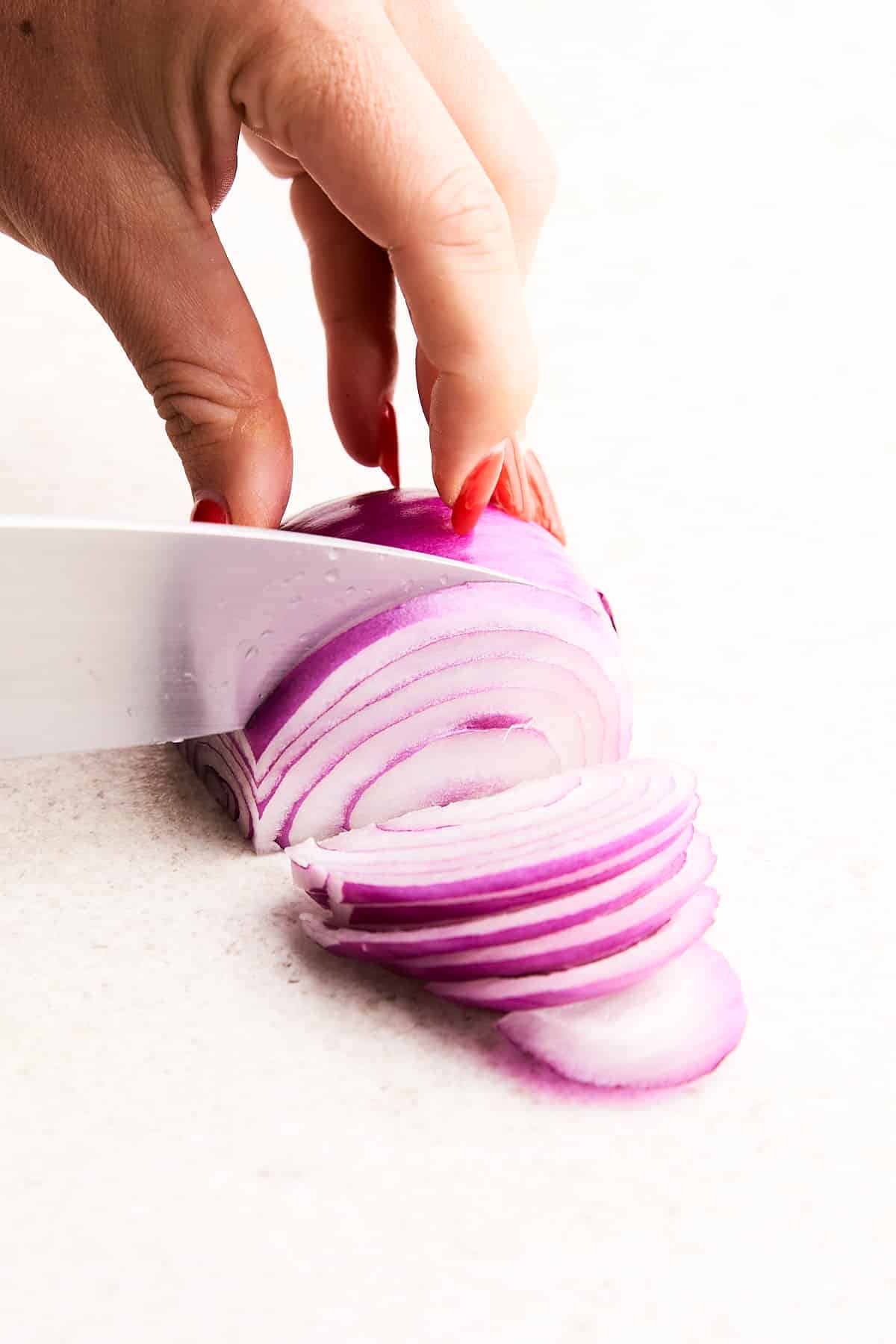
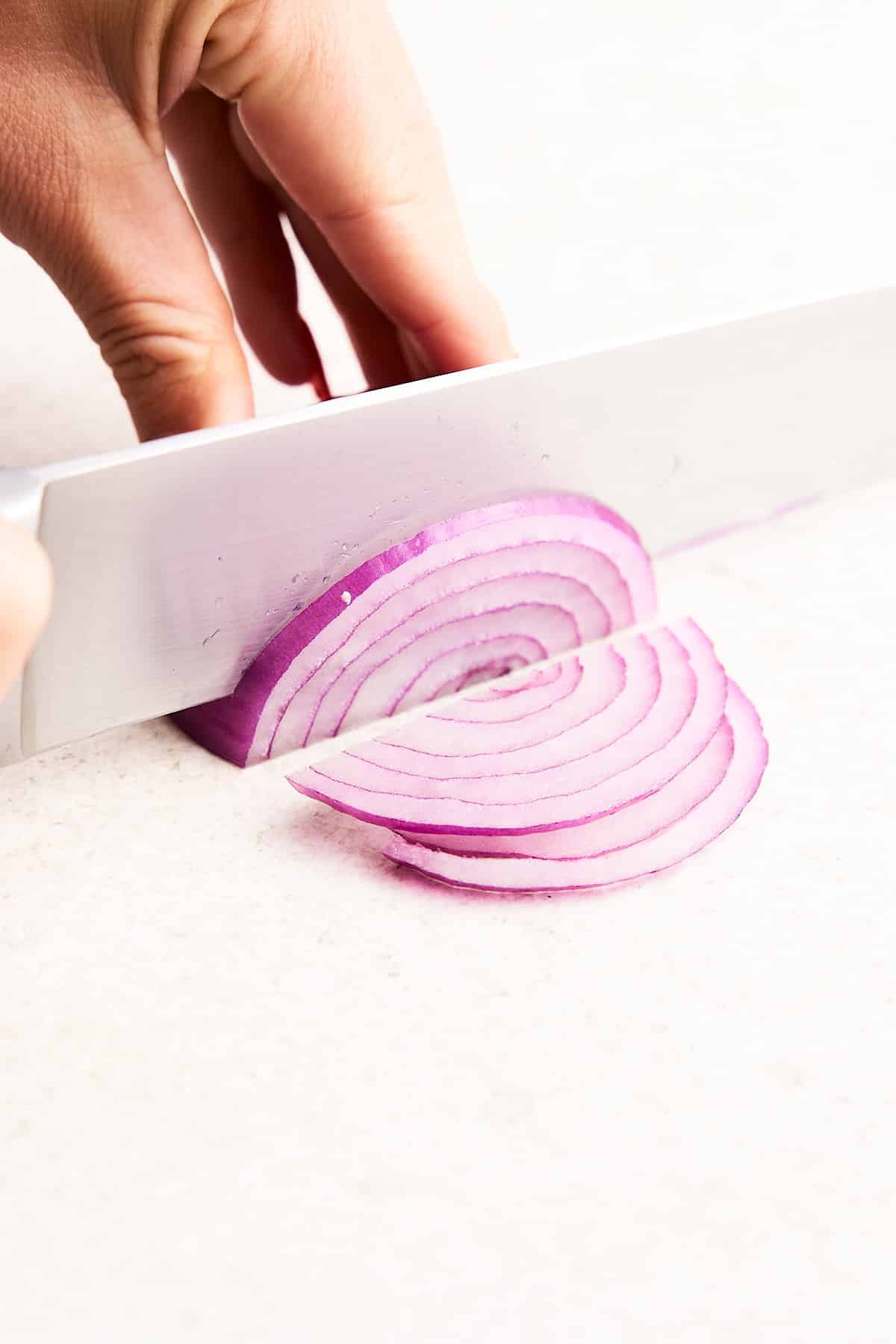
Alternatively, you can slice your onions into half moons. Spin the onion 90 degrees, then slice it right through the middle. Slice each quarter crosswise, or against the grain, as thickly or as thinly as you prefer. This method yields onions that are flavor-packed due to more sulfur compounds being created, which is perfect for salads, burgers, and pickling.
Option 3: Chunks
Place the halves flat-side down. Secure the onion with your non-dominant hand. Make lengthwise cuts (an inch thick) up to the root end, but not all the way through.
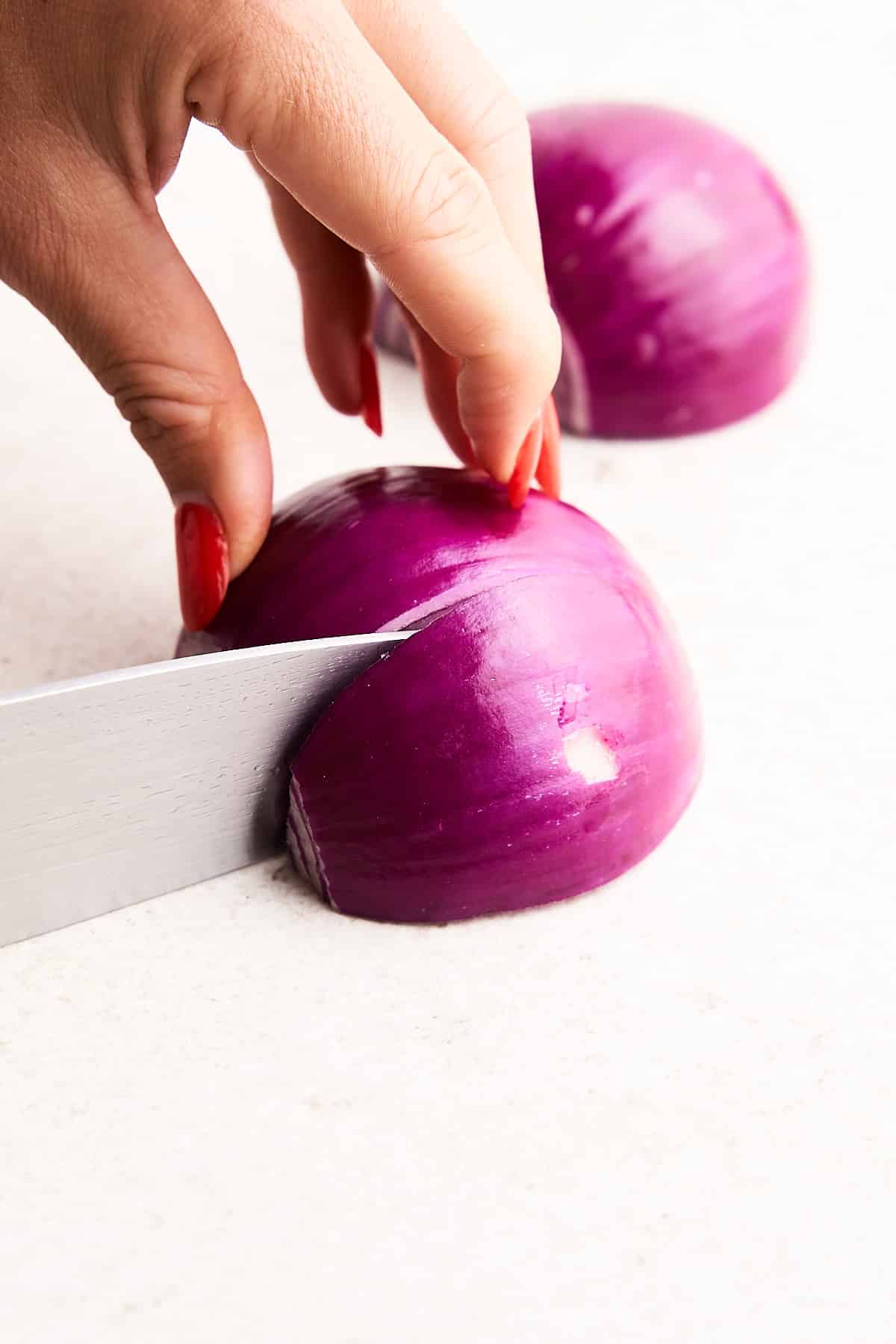
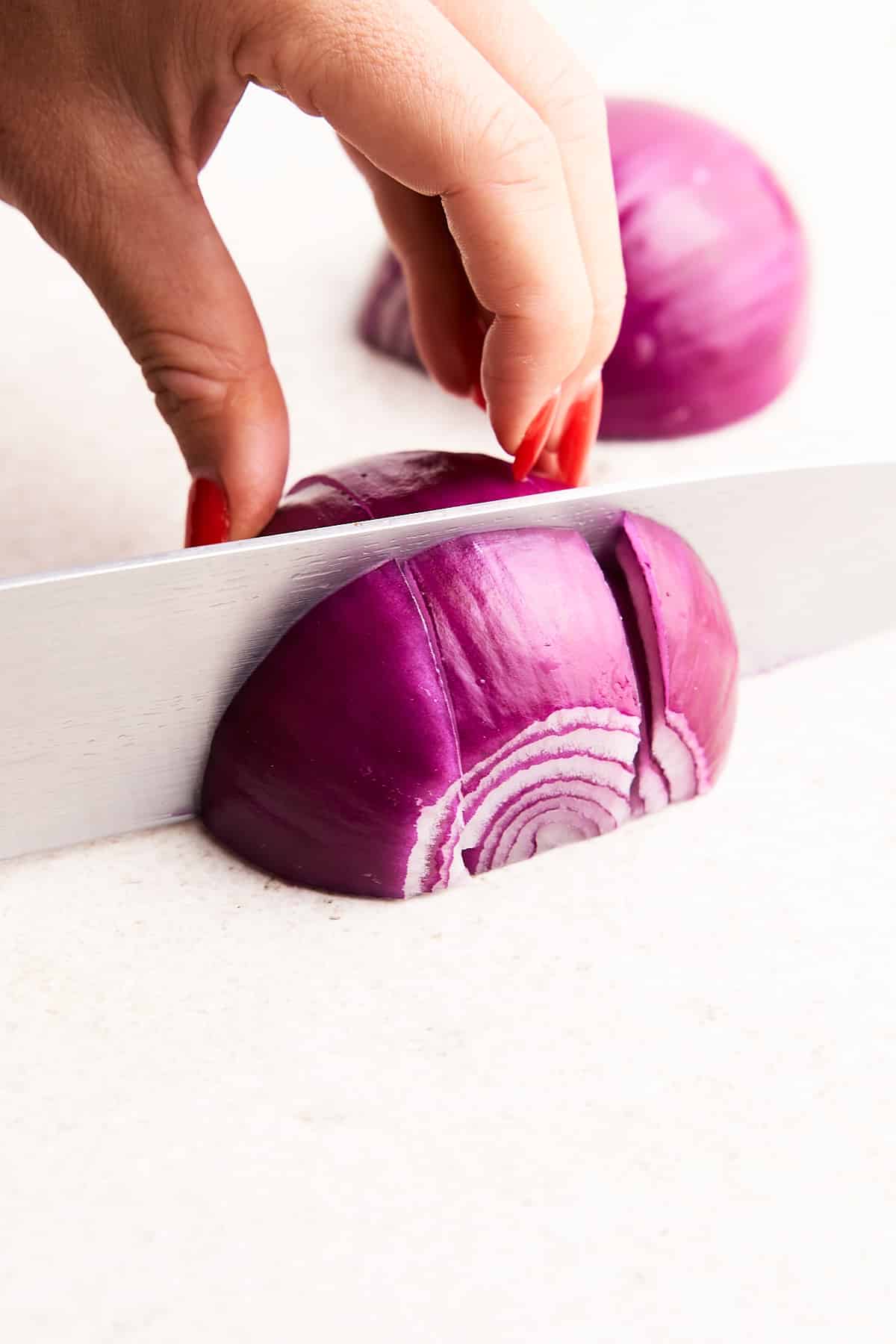
Rotate the onion and cut crosswise (about an inch thick) up to the root end. Once you reach the root, trim it away and discard it, making sure not to waste any onion. I love chopping onions like this for kebabs, Greek salad, or when I want to roast onions!
Option 4: Diced
Similarly, place the halves flat-side down. Secure the onion with your non-dominant hand, and make lengthwise cuts (about ¼-inch to ⅛-inch thick). Go up to the root end but not all the way through.
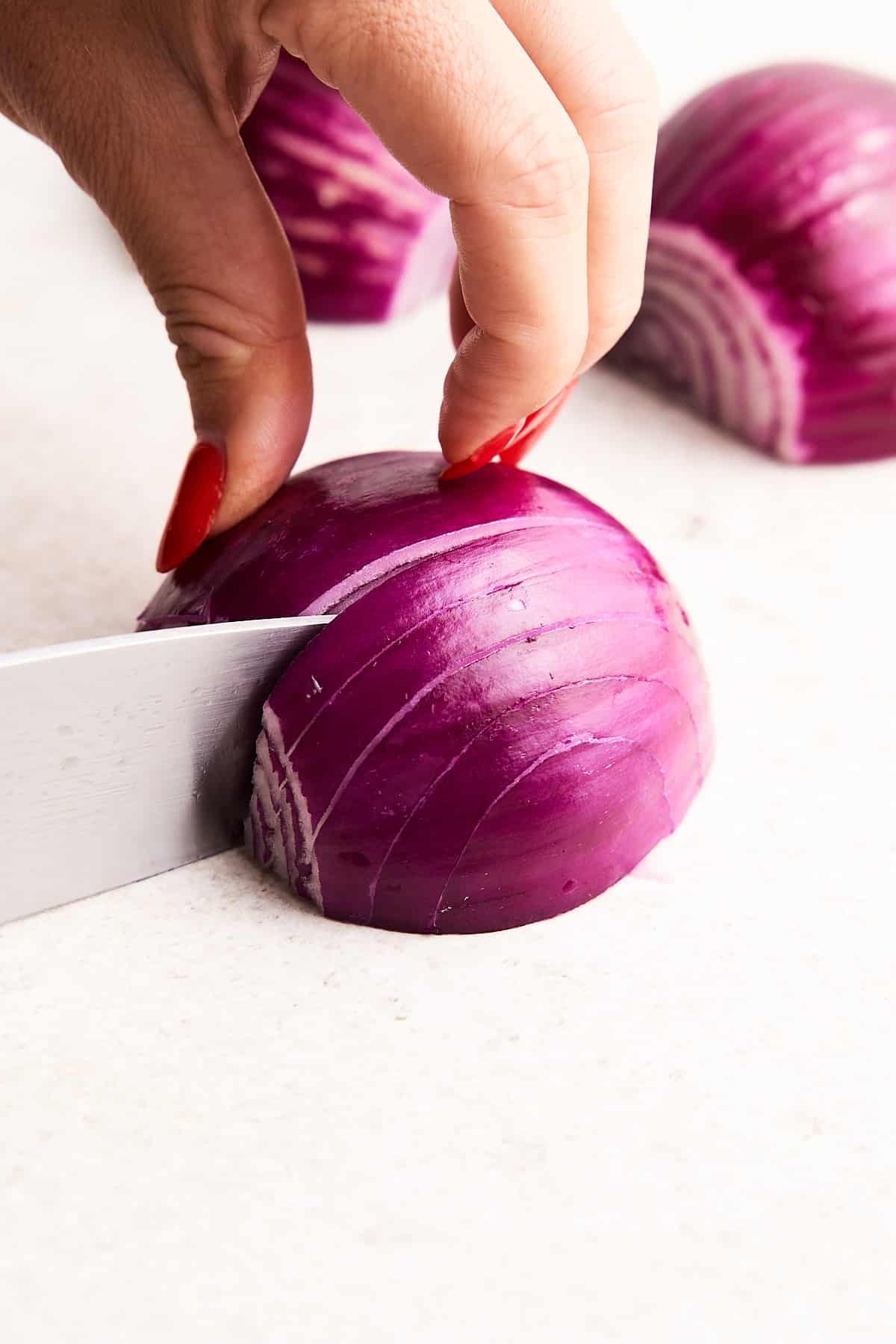
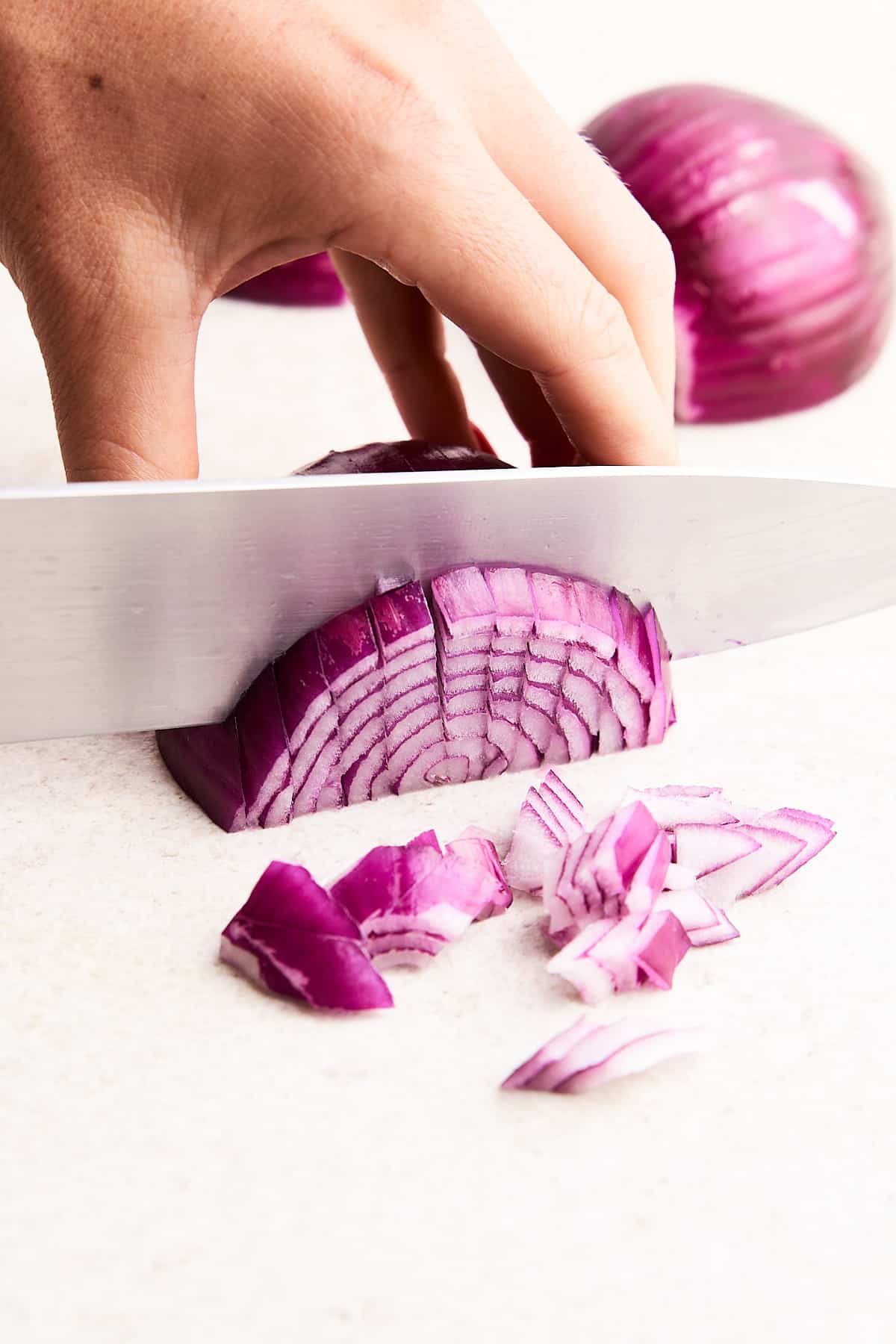
Rotate the onion and cut crosswise (about ¼-inch to ⅛-inch thick) up to the root end again. Once you reach the root, trim it away and discard it. Diced onions are a great way to flavor soups, curries, sauces, and more.
Tips for cutting
Just like shallots, onions are slippery and rather awkward. Prevent any mishaps from happening by following these tips and tricks:
- Knife sharpness: A dull knife is more dangerous in the kitchen than a sharp one. Make sure your knife is freshly sharpened prior to cutting onions.
- Blade position: Using the sharpest part of the knife is important, which means you need to position the middle part of the blade where you’re trying to cut (about 3-4 inches from the tip).
- Hand placement: To protect yourself from unwanted hospital visits, use your non-dominant hand to grip the onion with a clawed hand. Tuck your fingertips in, and keep your knuckles parallel to the blade while sliding them back as you cut the onion.
- Cutting board: Ensure you use a large, sturdy cutting board to avoid slipping while cutting. The best options are boards made of maple or walnut.
Why do onions make you cry?
I’m sure everyone has had a case of tears when cutting into a fresh onion. No matter what you do, you just can’t seem to stop!
This phenomenon is due to the breaking open of the cell walls of an onion, releasing fumes that react with the water on the surface of your eyes, forming sulfuric acid. This feedback loop makes your body create more tears to deal with the burning.
How to cut onions without crying
Here are just a few ways to prevent tears when cutting onions:
- Knife: A sharp knife allows for perfect clean cuts, limiting the amount of cell damage. In other words, less crying for you.
- Goggles: No one said you had to look cool while in the kitchen. Wearing goggles is a simple way to prevent crying when cutting onions.
- Ventilation: If you have fans in the kitchen or ventilation above your countertops, using them while cutting can help eliminate the pesky sulfur compounds from forming.
- Limit exposure: After making the cut, place the exposed side down on the cutting board so it limits contact with the air.
- Chill: Another option is to chill your onion for 15-30 minutes before cutting. Cold onions limit the activity of the enzyme responsible for making you cry. The sulfur compounds will be produced at a slower rate, meaning you have more time to cut your onion in peace!
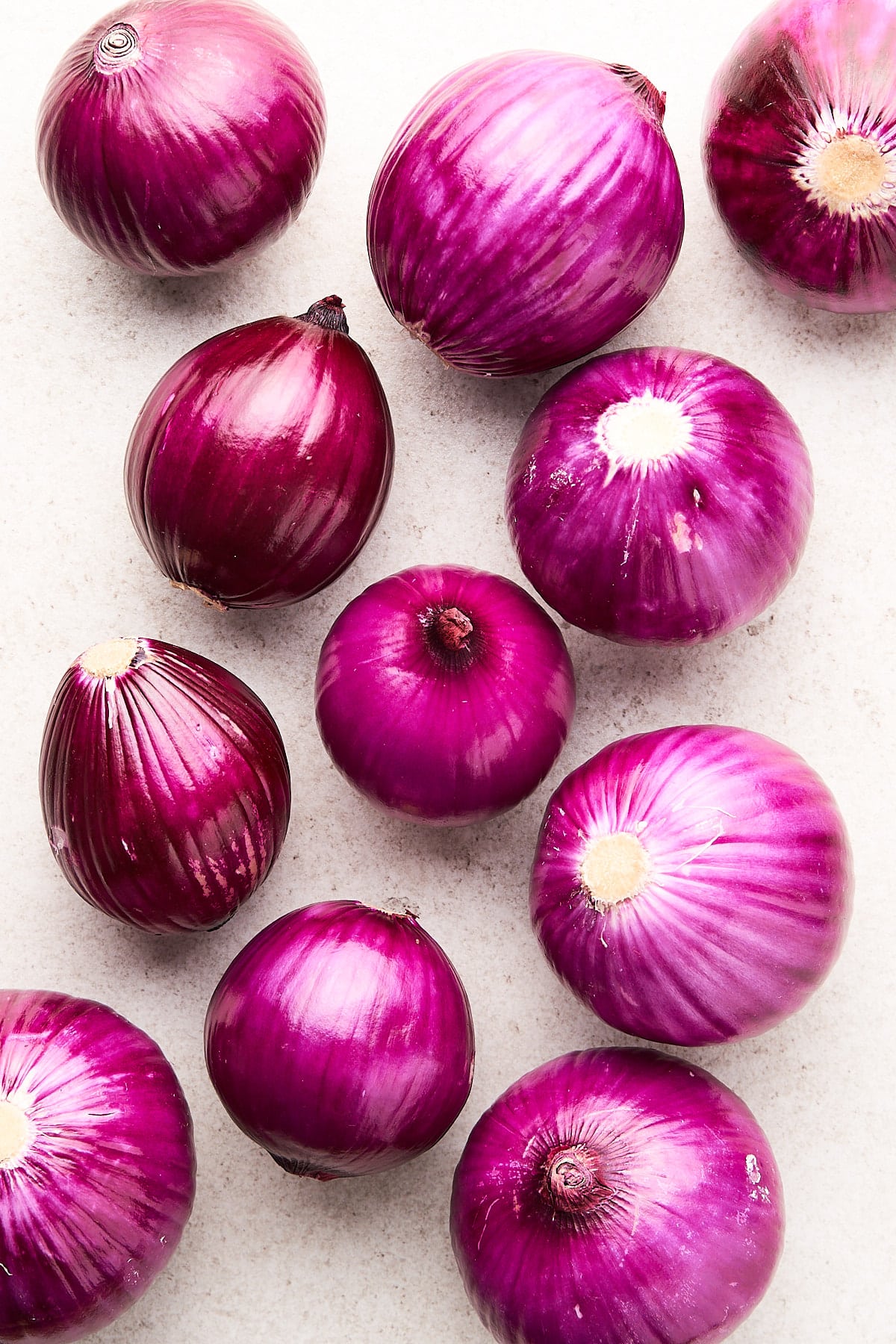
How to pick the perfect onions
Before you learn how to chop onions, the first step is choosing the very best ones! Usually available year-round, there are some key indicators to help you pick the perfect onions:
- Color: The overall color should be a uniform purple, beige, or white (depending on the variety). Check for any deep cuts, slits, discolorations, bruises, or soft spots.
- Weight: The more pungent an onion, the less water it contains. It will feel rather heavy, smooth, and firm, and it will have thicker skin. For a mild and sweet onion, look for more give, thinner skins, and broader necks. Avoid those that appear wrinkly, dry, and light.
- Sprouts: Avoid onions with sprouts coming out of the top. This indicates they are older and won’t taste as fresh.
Storing
These simple storage tips will prevent you from ever having to throw away onions again:
- Room temperature: Store fresh onions at room temperature for 2-3 weeks. However, if you’ve already cut them, they need to be refrigerated.
- Fridge: Wrap half an onion in plastic wrap or tin foil and keep it in a resealable bag. If you’ve cut up smaller pieces, keep them in an airtight container for up to 10 days.
- Freezer: If you’re not going to use them in this time period, add them to a freezer-safe bag and store them for up to 6 months. When you’re ready to use them again, add them to the pan and sauté them immediately.
How to use onions
There are so many easy ways to add onions to your cooking! Find out just how simple it is with these recipe ideas:
- Vegetarian Stuffed Mushrooms
- Quick Pickled Red Onions
- Healthy French Onion Dip
- Vegetarian Shepherd’s Pie
- Vegan Haggis
Onion FAQs
Before you chop an onion, it’s best to cut off the stem end and remove the skin. This way your knife will be less likely to slide on the slippery skin.
If you’ll be cutting the onion in half, cut the stem side first to make a sturdy base. You can keep the root end on while cutting or cut it off as well. It’s a personal preference.
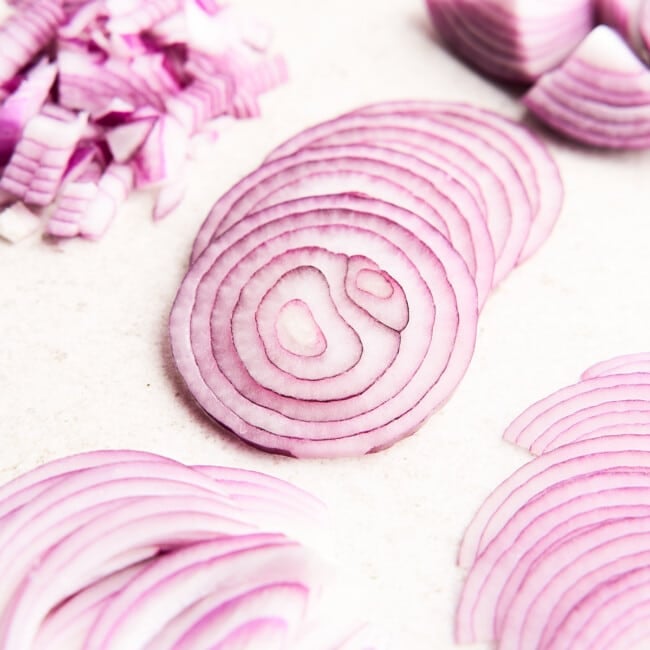
Ingredients
- 1 red, white, or yellow onion
Instructions
- With a very sharp chef's knife, cut the stem end off of the onion. Make sure to leave the root end intact (just like you would a shallot) as this will help keep the layers aligned while you cut it.
- Place the onion on the trimmed stem end, and slice it in half from the root end to the stem end (aka pole to pole). Peel the papery outer layer off of both halves.
Rings
- Stand the onion up on the stem end, and make a small slice on one side for a flat piece. Lay the onion on the flat side, then with a firm grasp, slice it starting from the stem end into ⅛-inch or ¼-inch thick rings. These make a delicious addition to burgers, sandwiches, or making onion rings!
Sliced (lengthwise)
- Once you’ve peeled the onion halves, lay each one on a flat side. With the root end facing away from you, slice the onion lengthwise all the way to the other side. This technique results in onions that are sturdy, making them great for stir-fries or stews.
Sliced (crosswise)
- Alternatively, you can slice your onions into half moons. Spin the onion 90 degrees, then slice it right through the middle. Slice each quarter crosswise, or against the grain, as thickly or as thinly as you prefer. This method yields onions that are flavor-packed due to more sulfur compounds being created, which is perfect for salads, burgers, and pickling.
Chunks
- Place the halves flat-side down. Secure the onion with your non-dominant hand. Make lengthwise cuts (an inch thick) up to the root end, but not all the way through. Rotate the onion and cut crosswise (about an inch thick) up to the root end.
Diced
- Similarly, place the halves flat-side down. Secure the onion with your non-dominant hand, and make lengthwise cuts (about ¼-inch to ⅛-inch thick). Go up to the root end but not all the way through. Rotate the onion and cut crosswise (about ¼-inch to ⅛-inch thick) up to the root end again.
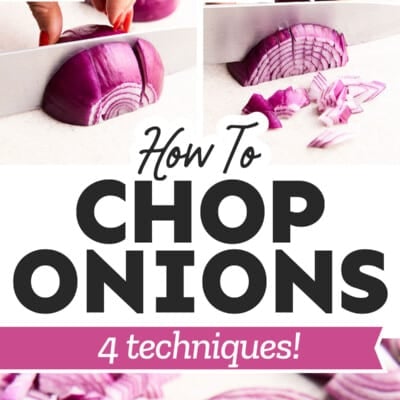
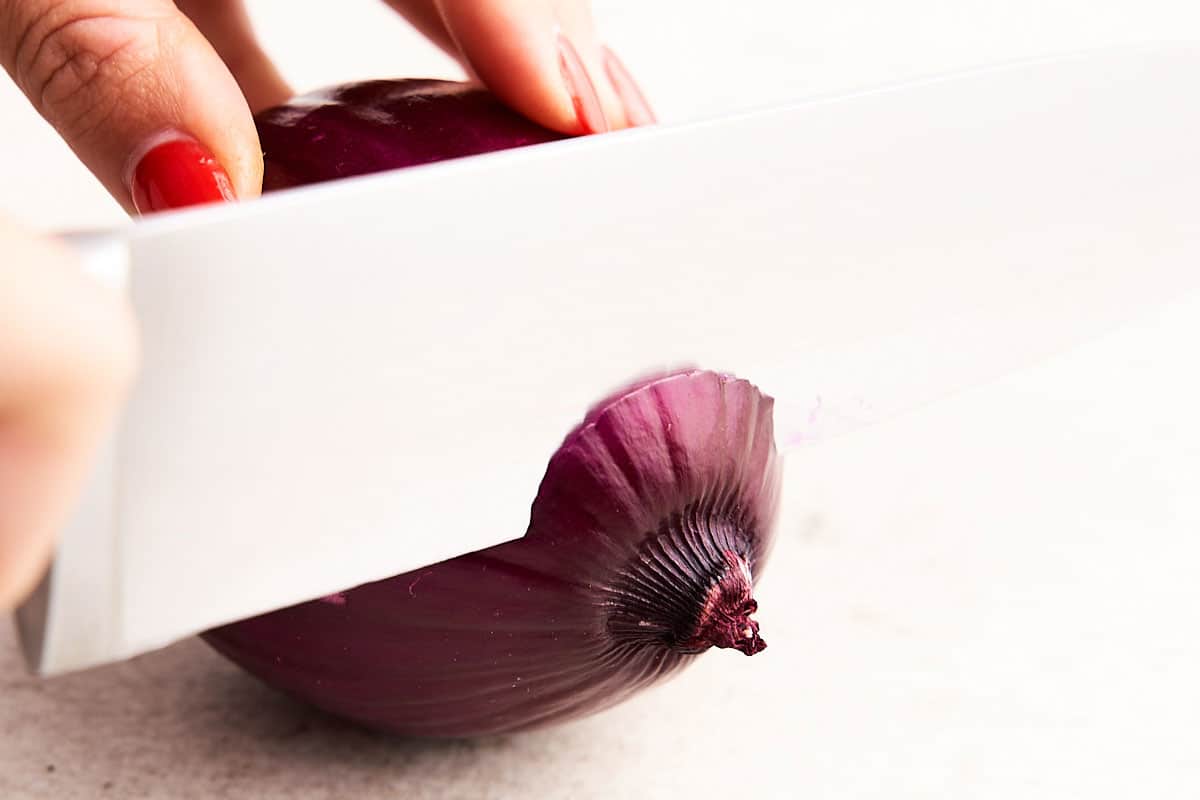

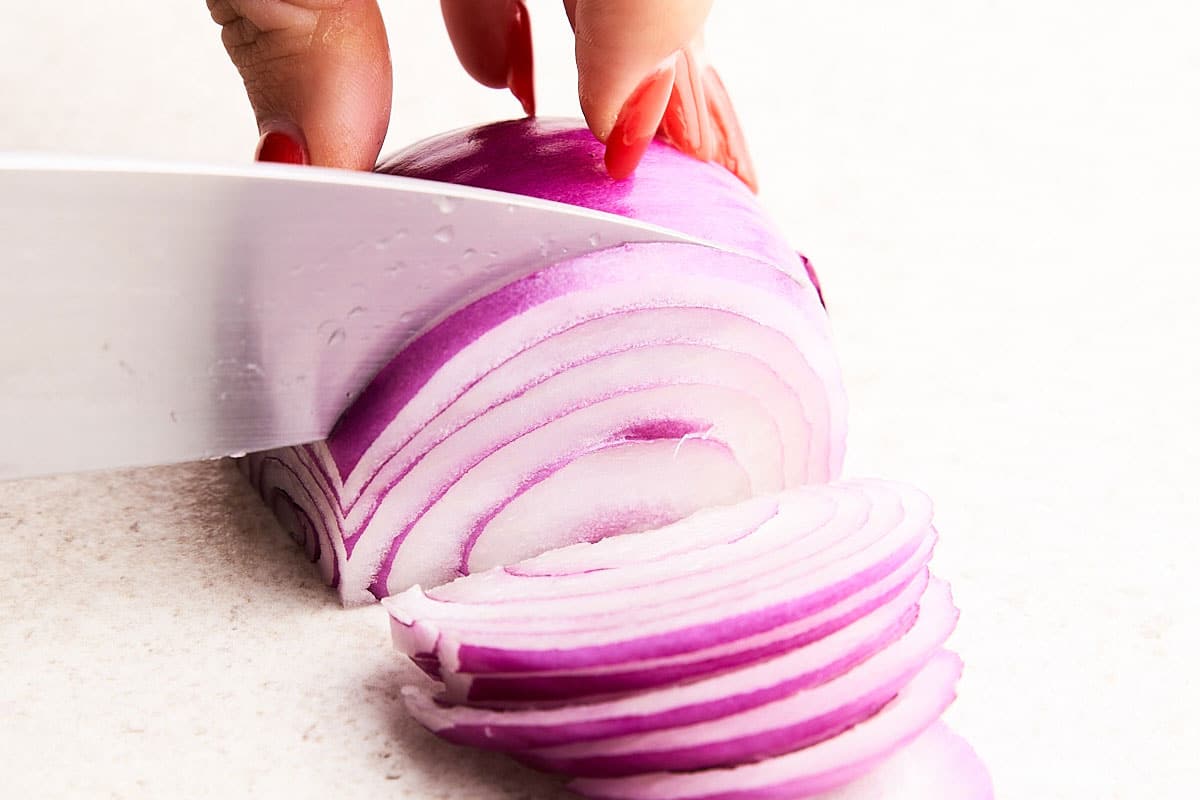
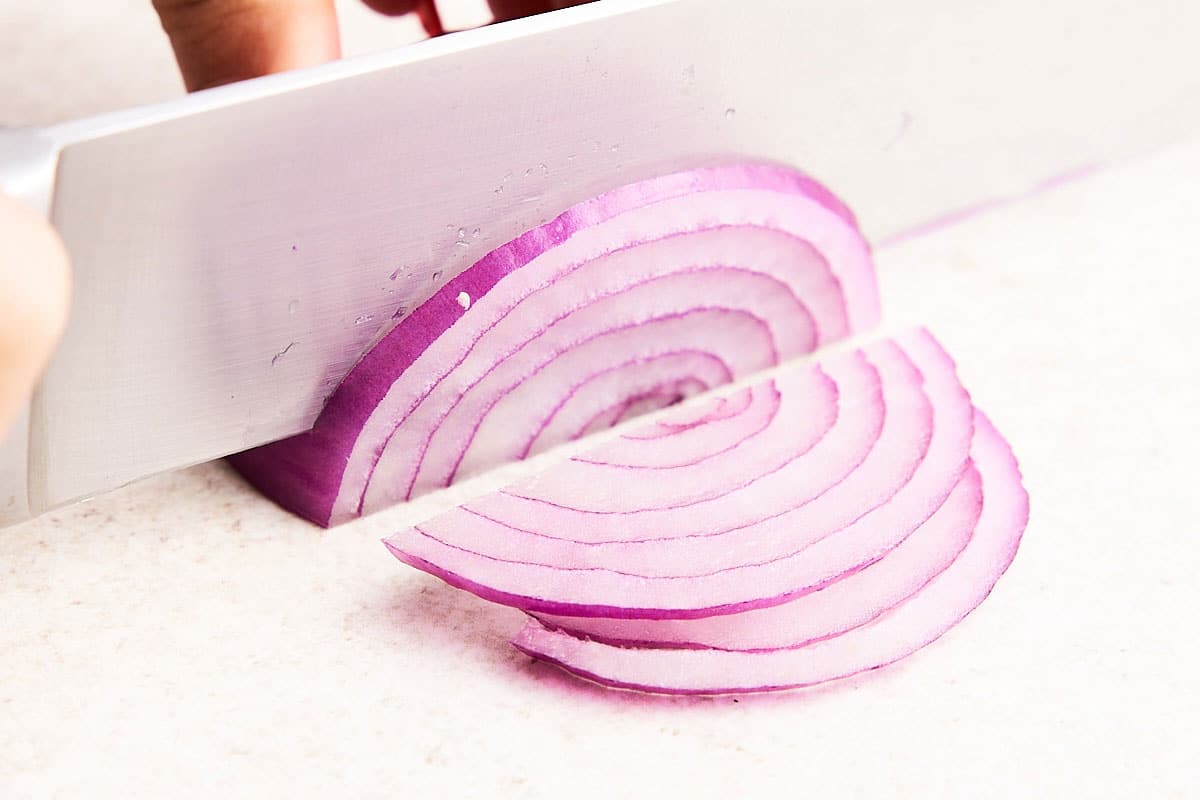
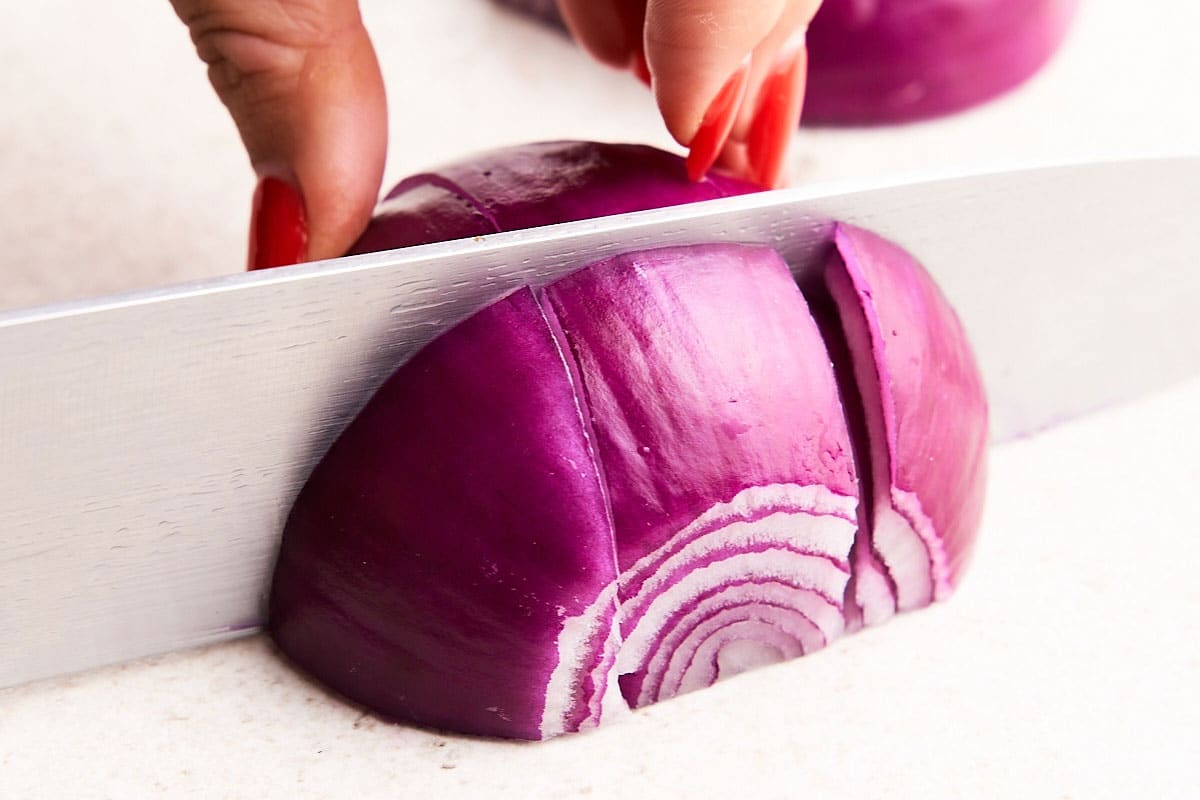
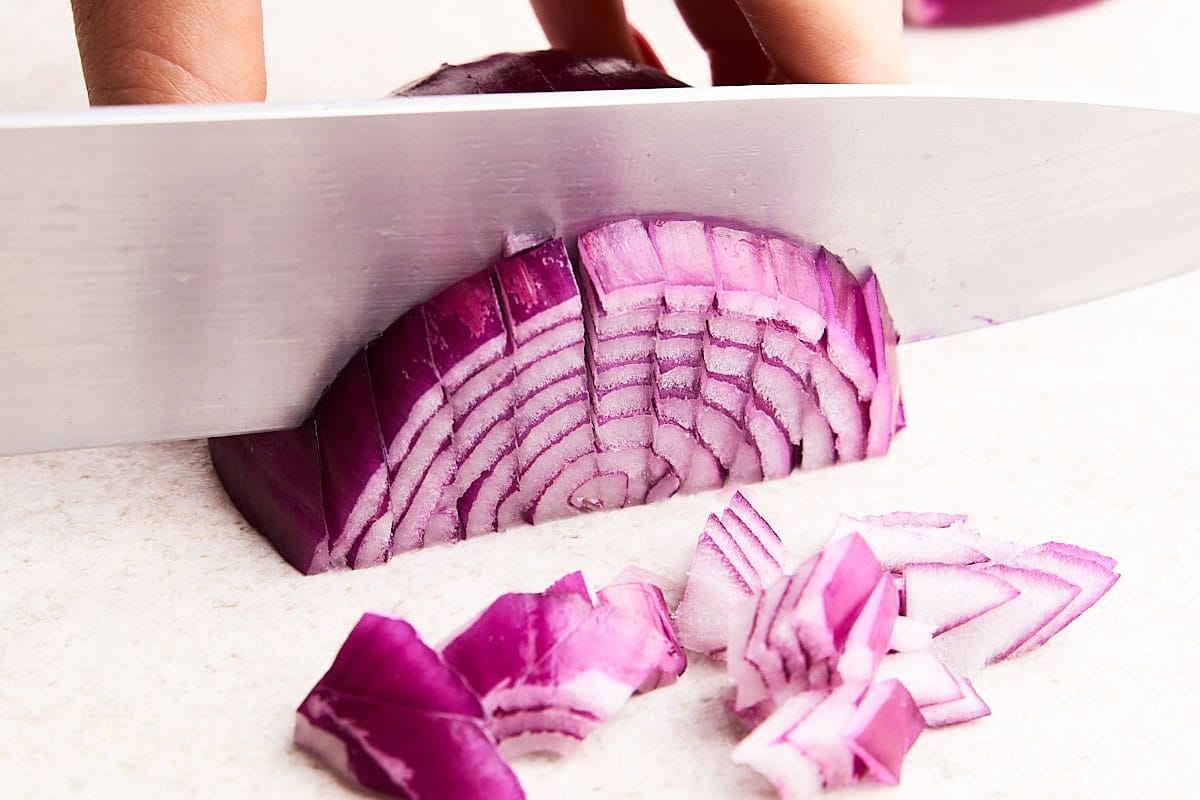
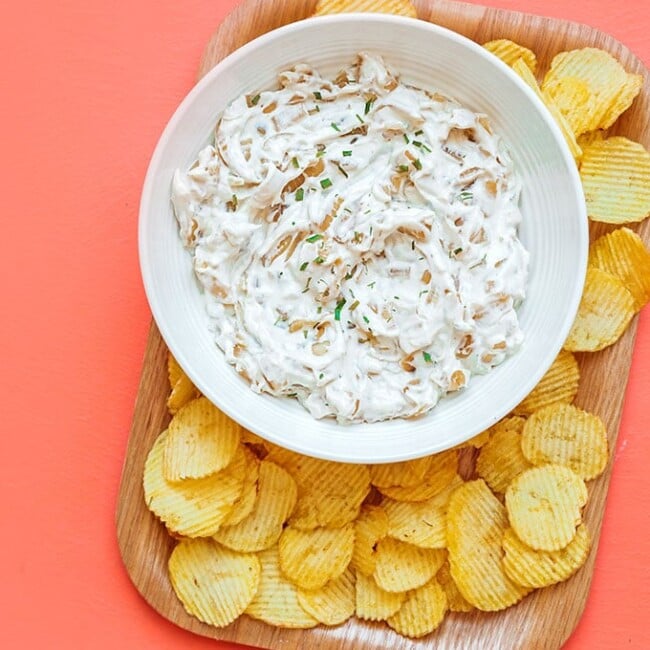
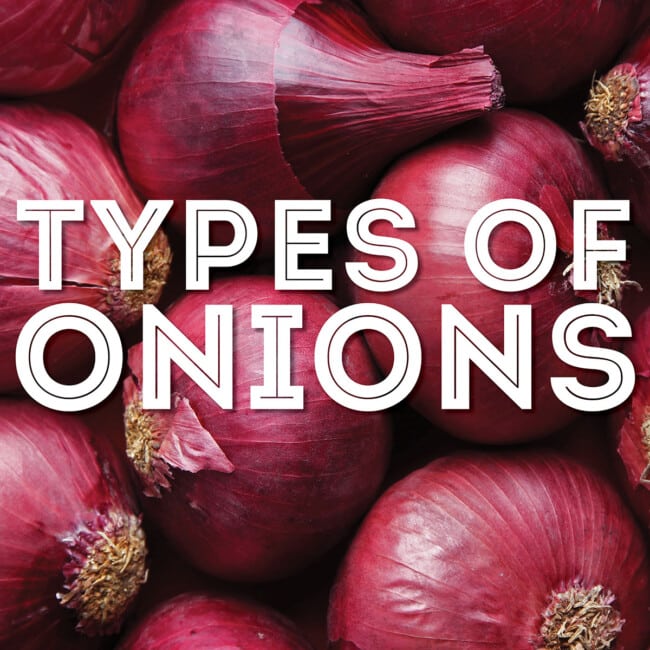
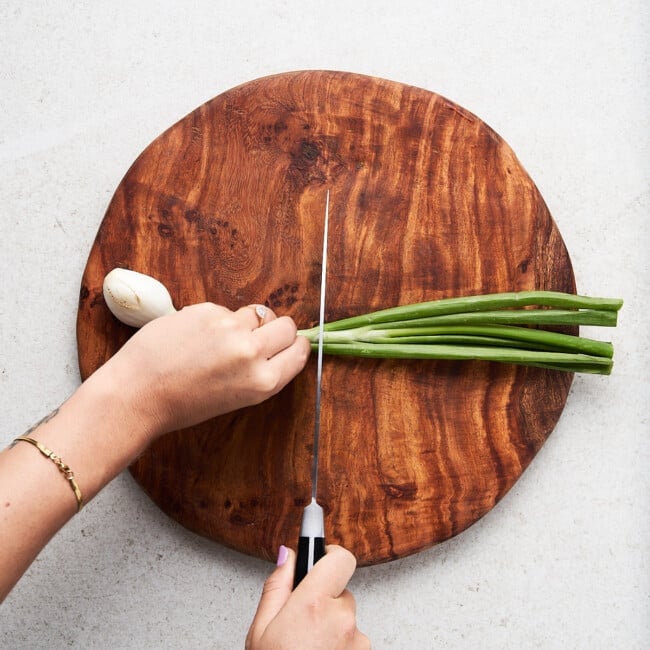
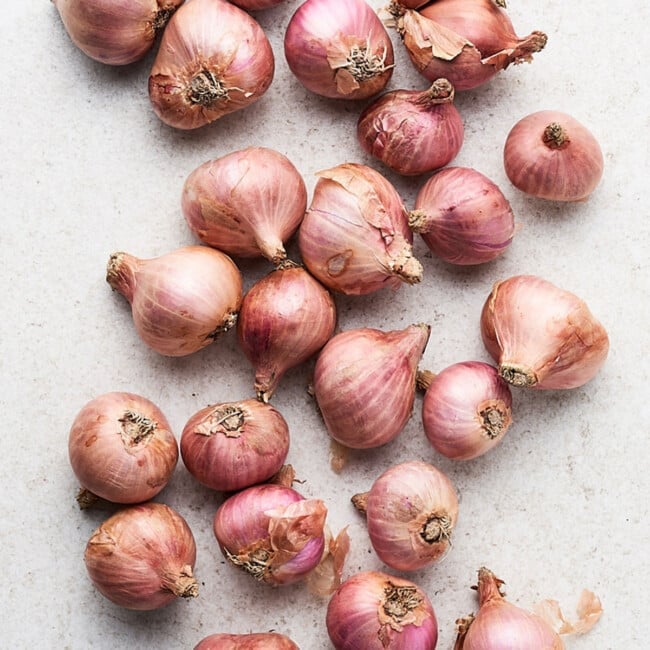
Leave a Comment